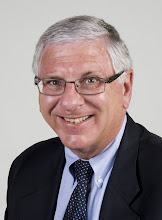Tuesday, August 13, 2013
Automated analysis finds weakness in soccer coaching strategy
Review of 380 games suggests away teams should be more aggressive
Investigators at Disney Research, Pittsburgh, are applying artificial intelligence to the analysis of professional soccer and, in one application of the automated technique, have discovered a strategic error often made by coaches of visiting teams.
The common wisdom that teams should "win at home and draw away" has encouraged coaches to play less aggressively when their teams are on the road, said Patrick Lucey, a Disney researcher who specializes in automatically measuring human behavior. Yet the computer analysis suggests that it is this defensive-oriented strategy, and not officiating, that reduces the likelihood of road wins.
The researchers from Disney Research were assisted by Dean Oliver, Director of production analytics at ESPN. The team presented its findings at the Conference on Knowledge Discovery and Data Mining (KDD 2013) in Chicago.
Though soccer was the focus of this study, the researchers say their techniques are applicable to other team sports that feature continuous play, including basketball, hockey and American football.
An analysis of all 380 games from a 20-team professional soccer league's 2010-2011 season found that performance measures such as shooting and passing percentage were similar for home and visiting teams.
"My intern, Joe Roth, first noticed this while digging into the passing patterns of different teams. He found that they had approximately the same passing and shooting percentages at home and away. But where they had possession was very different," Lucey said.
At home, the team had the ball in its opponents' defensive third more often – and thus had more shots on goal – than when on the road and played a more defensive, counterattacking style. It was a pattern the researchers discovered held true for nearly every team.
"Visiting coaches are setting their teams up for failure from the get go," Lucey said of the common strategy. "They're not opening themselves up for randomness. The fault doesn't lie with bad calls from the referees."
Though human experts may have a feel for the game that no computer could match, Lucey said computers also have advantages over humans. "An expert might have a gut feeling," he said, "but an expert wouldn't be able to remember all details of all 380 games."
Professional sports teams today increasingly use quantitative methods to analyze performance. Some sports, notably baseball, lend themselves to such analysis because games are naturally divided into plays and sets. Soccer, on the other hand, is continuous and low-scoring, which makes analysis difficult, even though data is plentiful.
Rather than track player positions, for which data is scarce, the Disney researchers used ball action data – time-coded information about everything that is happening to the ball. This information is typically used for online visualizations of matches and is manually compiled by Opta, a commercial sports data supplier.
For the 2010-2011 season, that amounted to 760,000 ball action notations. The Disney software uses this data to infer the position and possession of the ball for every second of 380 games. It then divides the field into different areas and then counts how many times the ball was in each area over a specified time.
This yields "entropy maps," which model the uncertainty of a team's behavior in different areas of the field. Teams with high entropy spread the ball around and are harder to predict; low entropy teams have players who tend to stay within certain areas of the field.
By combining these entropy maps with commonly used match statistics such as passes, shots on goal and fouls, the automated analysis can distinguish between teams with high accuracy, the researchers have found.
The analysis of road team strategy is just one application of this automated technique, Lucey said. It could become a tool for coaches to track their team's progress or to provide insights for developing game plans, as well as an aid to television commentators.
Subscribe to:
Comments (Atom)
